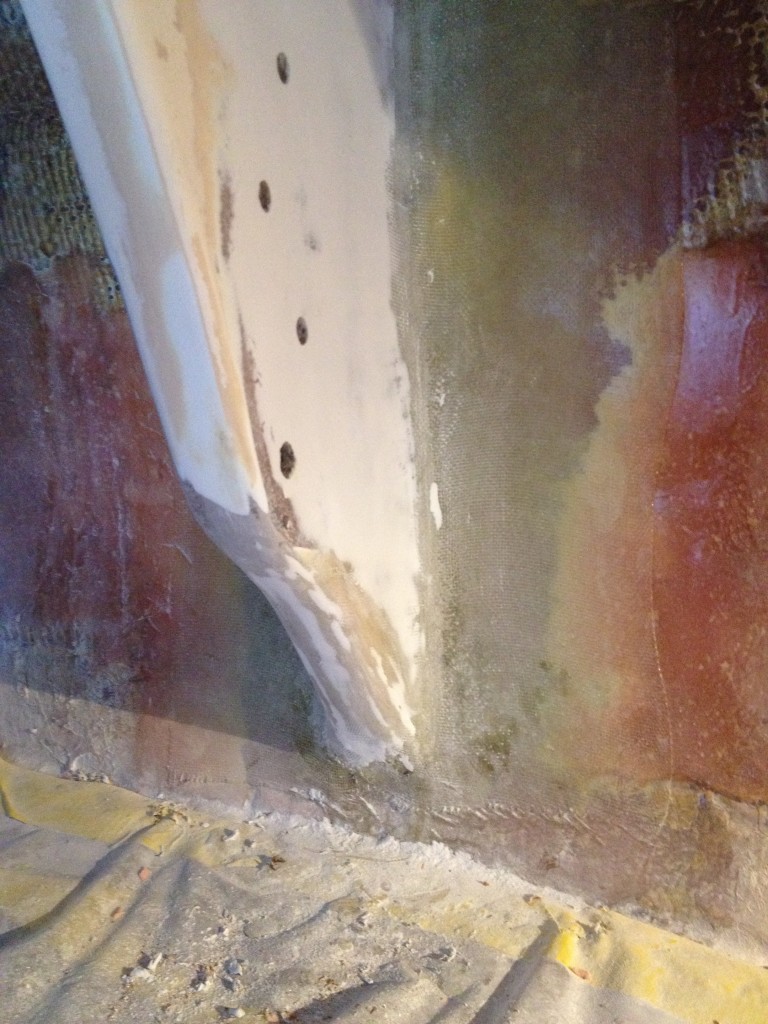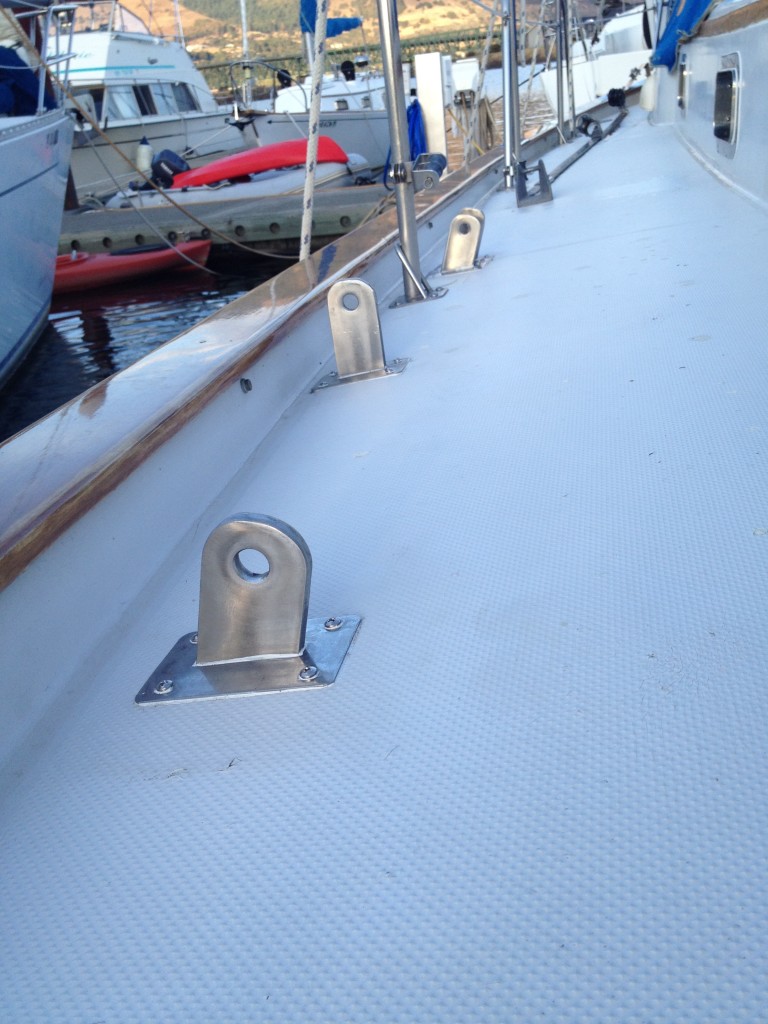Mexico is a different country. This sounds self-evident, of course it is! My point is that the seventy mile hop between San Diego and Ensenada is geographically small, but culturally quite significant. The trip to Ensenada takes only an hour and a half by car, ten to twelve hours by sailboat. Compared to San Diego, the weather is the same, the ocean is the same, even the landscape is pretty much the same. But the the government, the language, the culture, and the rules are very different.
Checking into Mexico by boat is somewhat complicated and helps to underscore the differences in language and culture. We wanted to be as prepared as possible, so we tried to do most of the permitting work ahead of time. This was frustrating, and not really successful. We found that the best way to check into Ensenada by boat is simply to come here with all your original documents and a boat-load of patience. Check-in involves showing proof of Mexican liability insurance (not your standard policy) and getting FMM tourist cards, Fishing licenses, and a Temporary Import Permit (TIP) for the vessel. We tried to do each of these things in advance with lots of frustration and limited or no success. Fortunately, we knew in advance that we’d have problems with the TIP, so we were able to be proactive about it when we arrived and enlist the help of an agent. We found that the only thing you really must do in advance is to purchase Mexican liability insurance, which we did by phone & email the day we departed the US.
There is a lot of discussion amongst cruisers about problems with Temporary Import Permits. The Mexican government is extremely generous in extending a “free pass” for foreigners to bring their vessels to Mexico without paying duty. This brings a lot of extra tourist money into the economy, but there are problems with the process for cancelling an import permit. When leaving the country, visiting boaters typically leave the TIP in place since it’s good for ten years. But years later, when selling the boat, the TIP appears irrelevant, and may easily be discarded or forgotten. When the new owner brings the boat to Mexico she may find that there is already a TIP on her vessel. Without the original certificate, which goes with the vessel, an old permit can only be cancelled in person. This was the problem we had. After numerous phone calls and emails, and with the help of an agent, we found it necessary to go to the police station in Ensenada and report the original TIP certificate lost. The subsequent process was long and bureaucratic, but eventually we were able to cancel the previous TIP and obtain a new one. The entire saga took the better part of two days, but might have been done in one day if we had known exactly what steps to take before hand. Nonetheless, the bureaucratic mumbo-jumbo is part of checking in by boat. Now that we’re officially in Mexico, we are loving it.
One interesting aspect about cruising is the element of uncertainty. Perhaps the most significant lifestyle change for us is dealing with far less certainty in our lives. Ashore, things are fairly predictable; meals, activities, bedtimes, even the cast of characters all go more-or-less according to plan. Now, our lives are in constant flux, shifting in response to ever-changing variables that emerge to divert, thwart or simply alter our plans. In general, we try take things day-by-day, and not have too many expectations. But still, I notice the strain of being constantly prepared for change, and of keeping our family safe in an uncertain environment. I feel alive, but it is a lot of work! By nightfall, I am usually exhausted. Whether or not I’ll have time to sleep is also uncertain.
After pushing hard to get South, we realized that the weather was not suitable for us to make a fast passage to Puerto Vallarta to meet our friends Chuck and Cathy as planned. South of Ensenada, options for hauling out become increasingly limited and far more costly. We decided to stay in Ensenada for an extra week to haul out at Baja Naval, a well-respected yard near the downtown district. This decision gave us time to stabilize the kid’s homeschooling, which had become a bit haphazard as we pushed the schedule along. It also allowed us to catch the Baja1000 off-road race which starts and ends in Ensenada. It was incredible to see insanely powerful off-road vehicles blaze past us (sideways) at ninety mph, and even more interesting to see the Mexican people rally around this event as if it were a national holiday. Uncertainty leads to surprises, some pleasant, others not. Interesting nuggets like this are what we are searching for, and I am thankful to dig for them out here in the world.
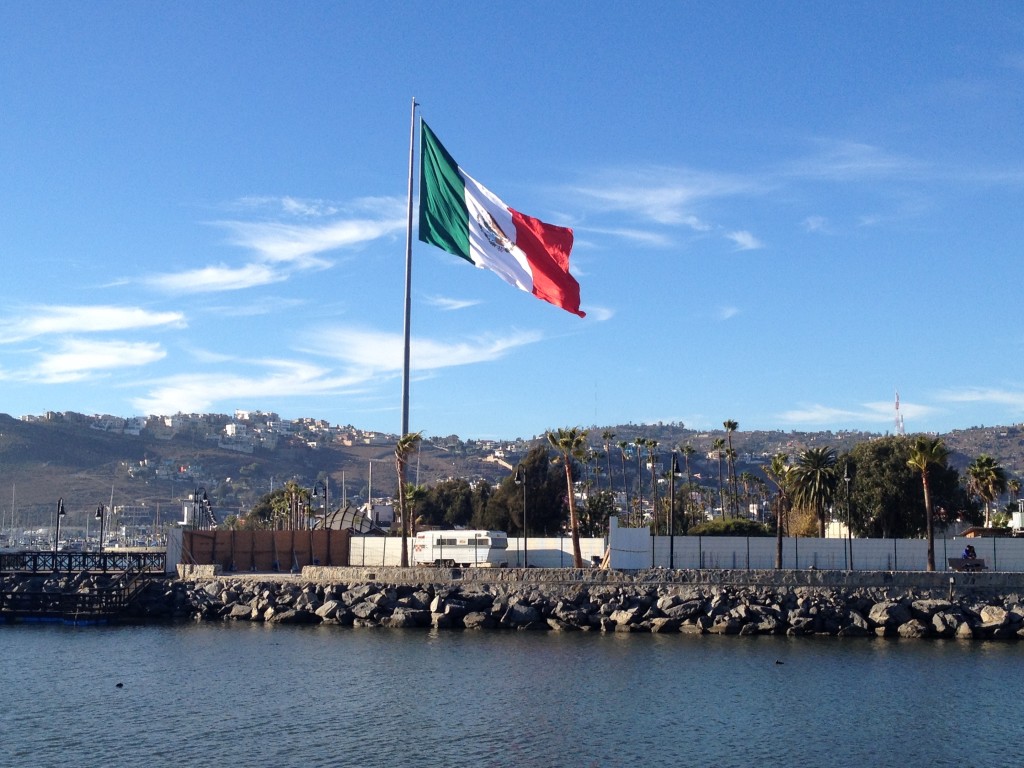
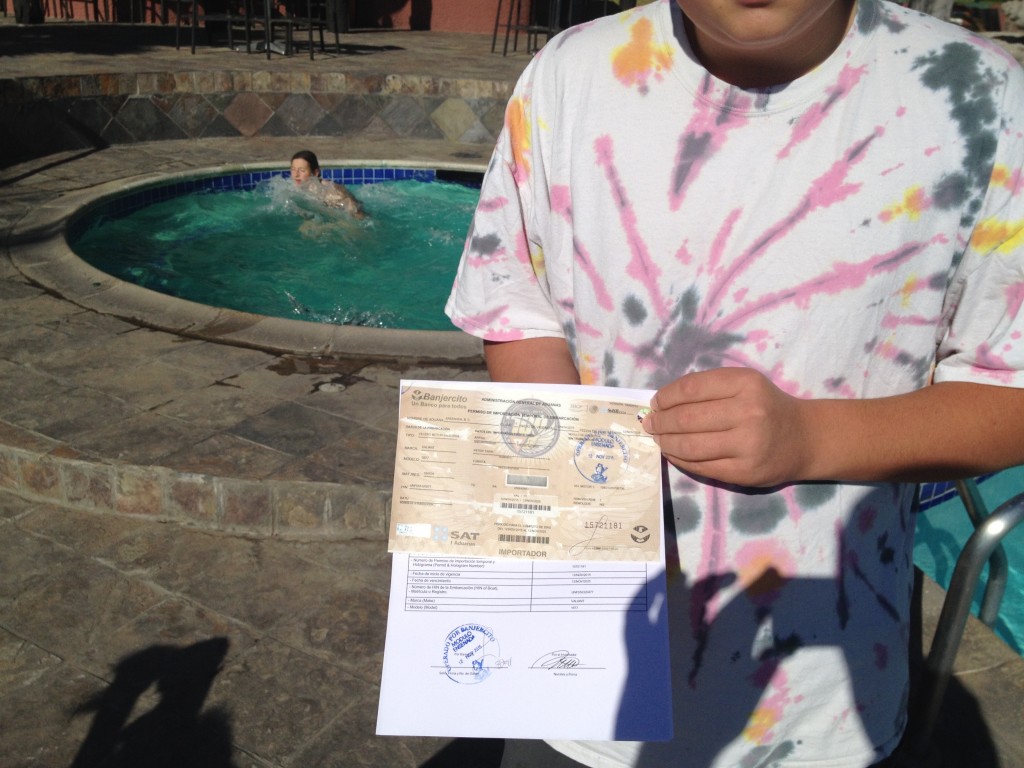
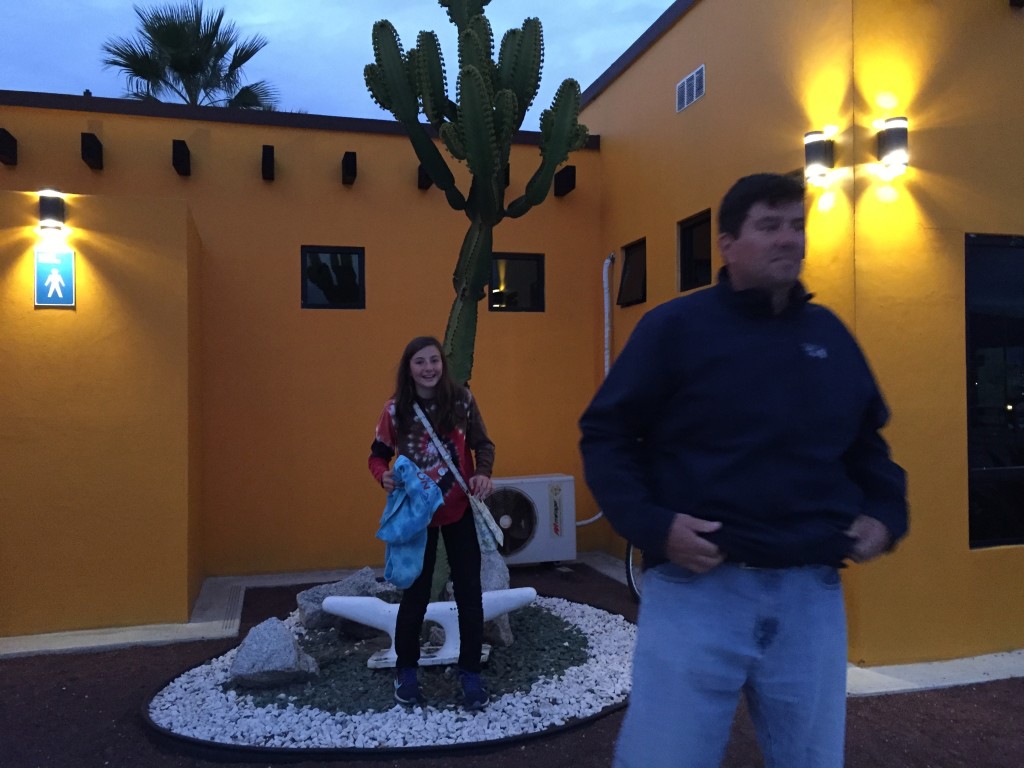
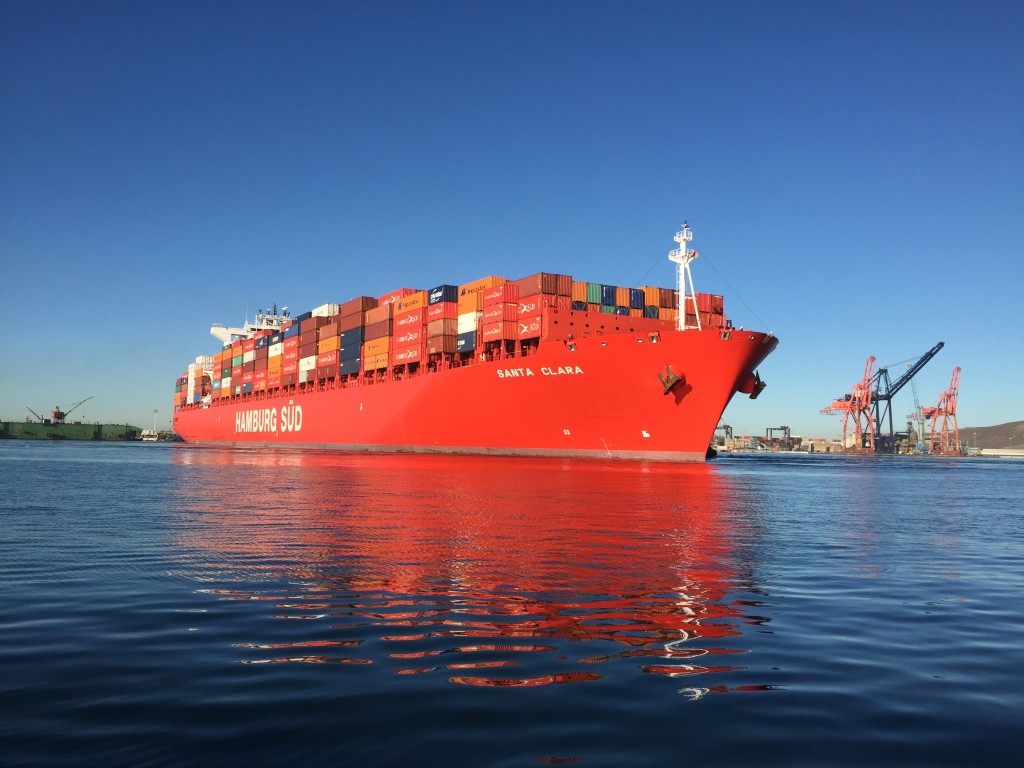
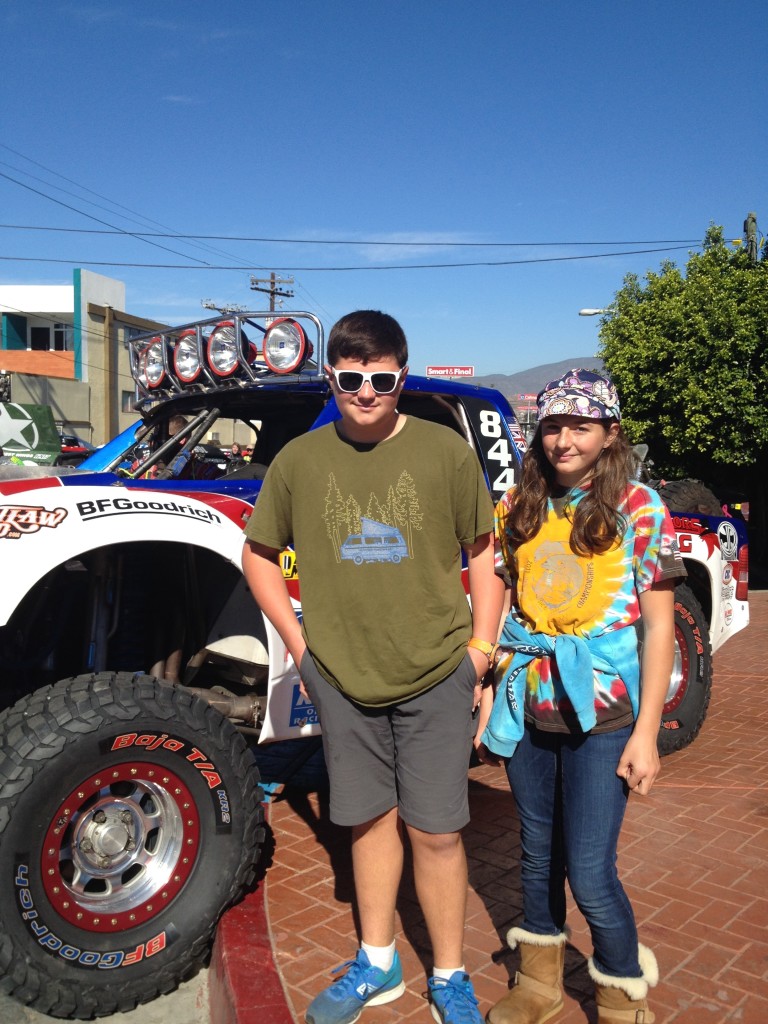
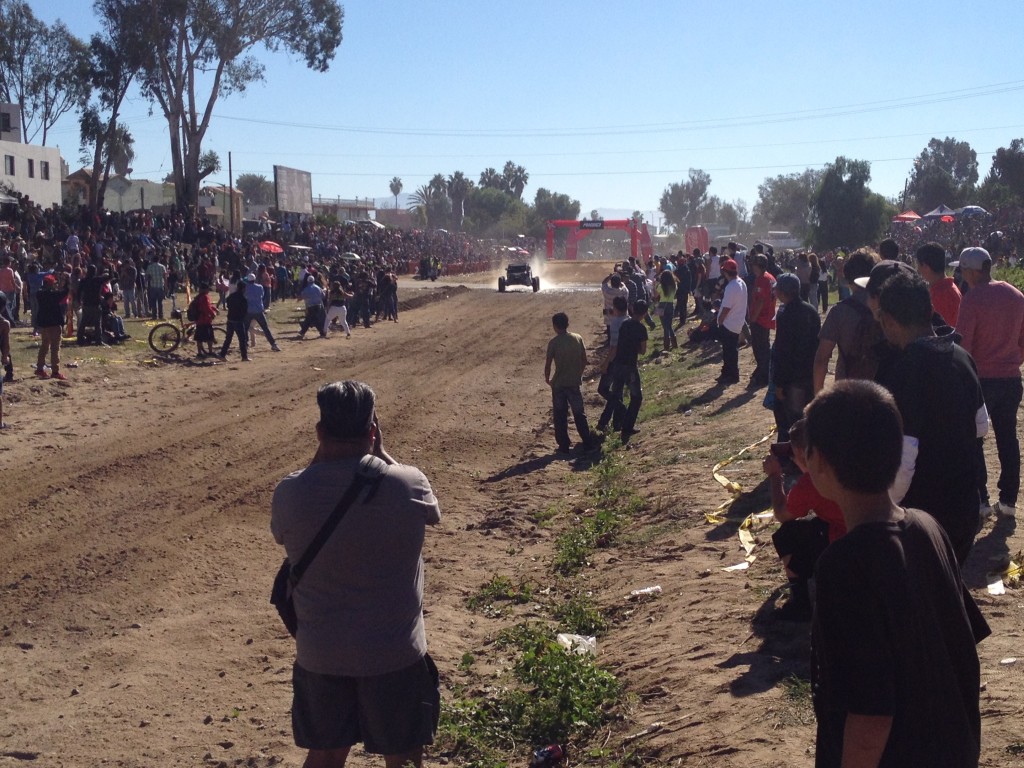
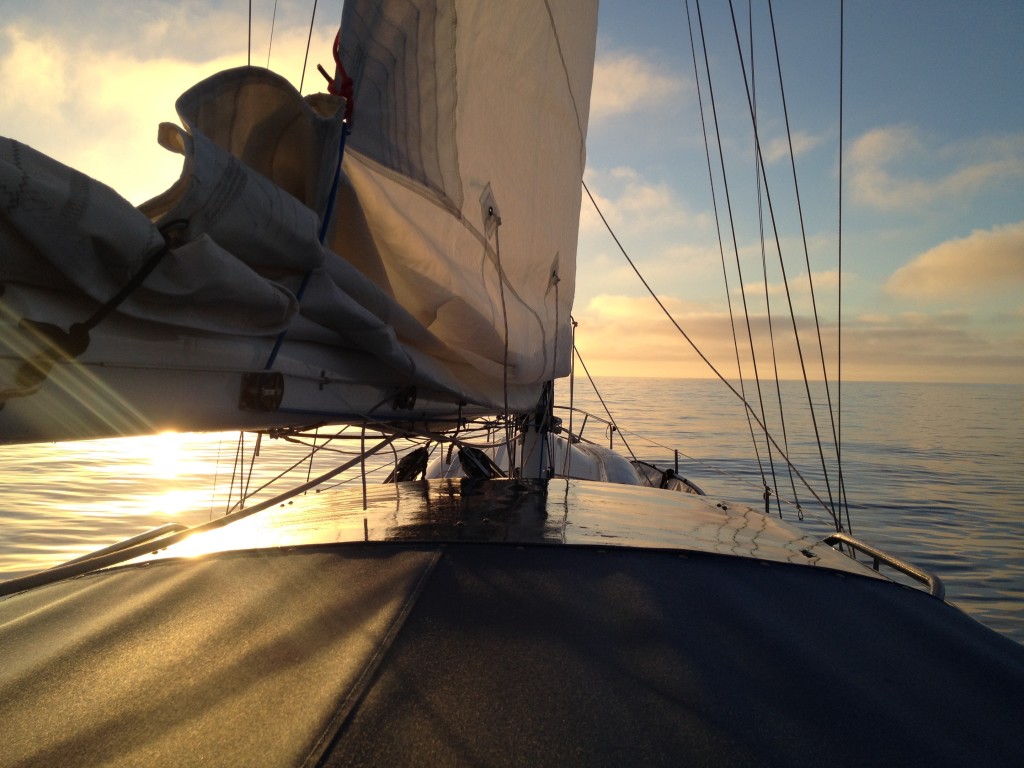
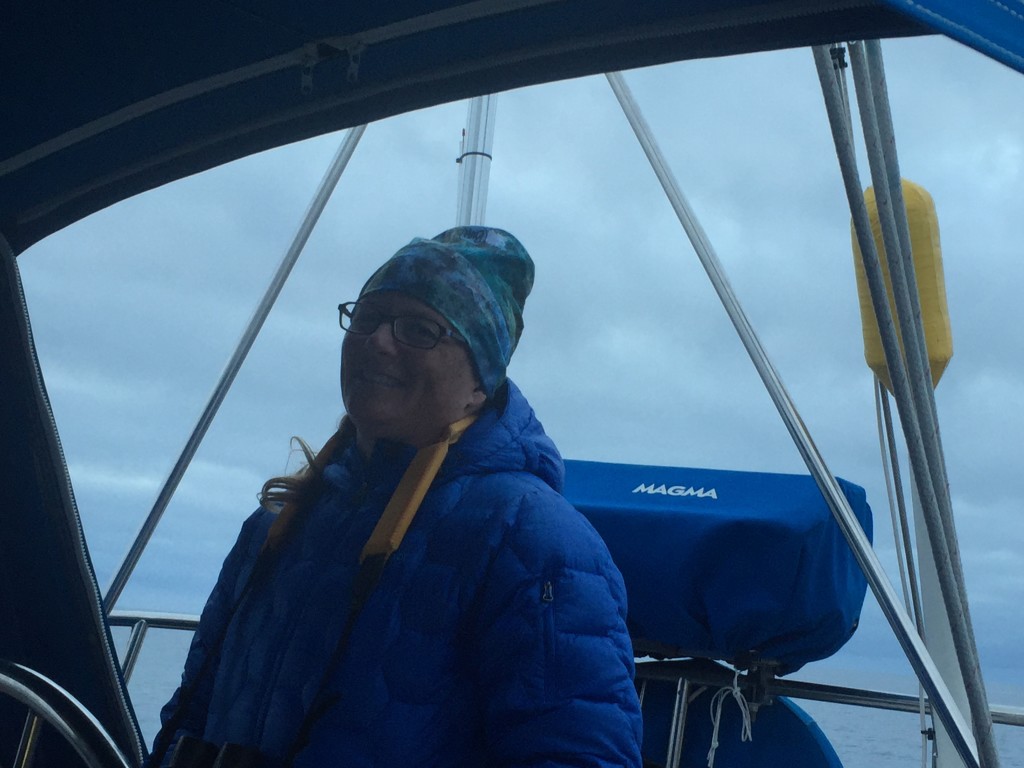
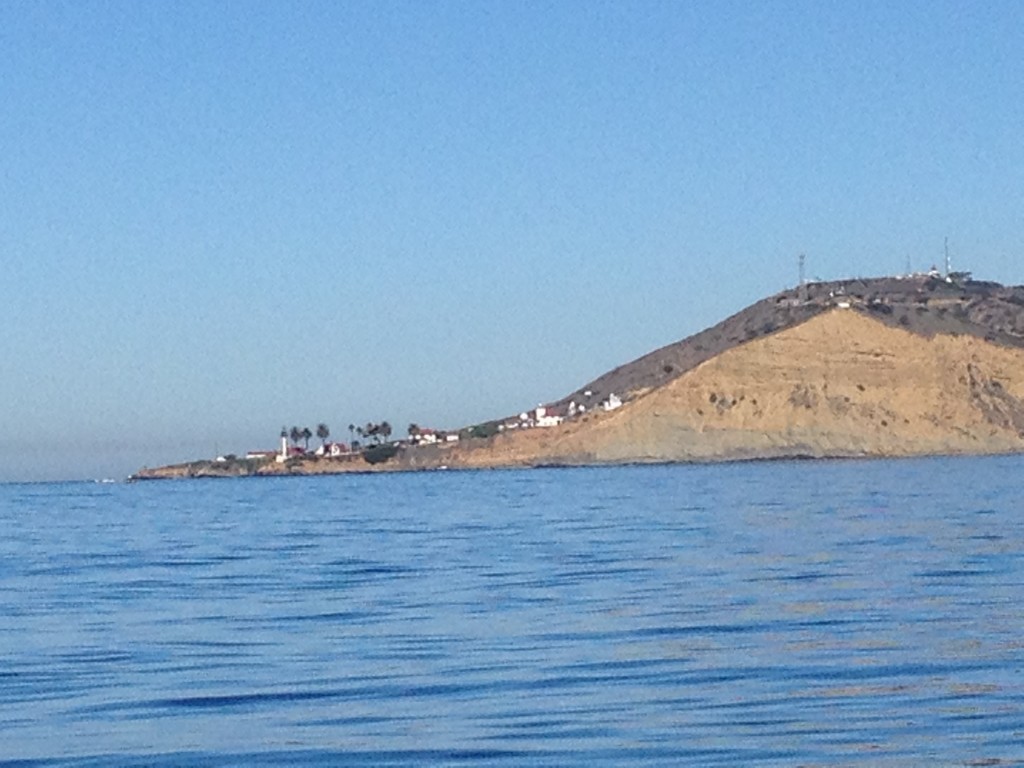
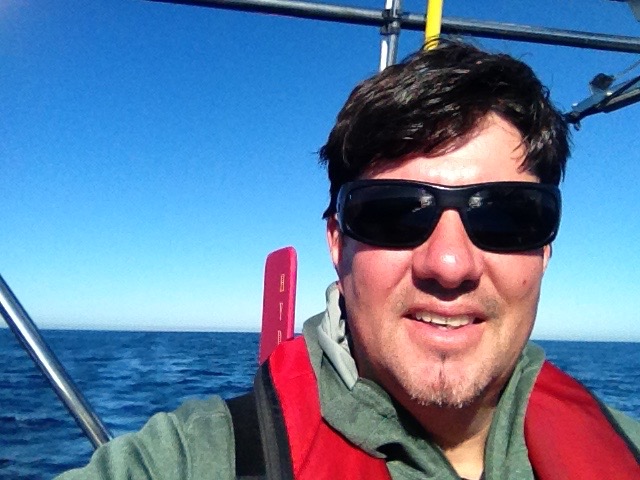
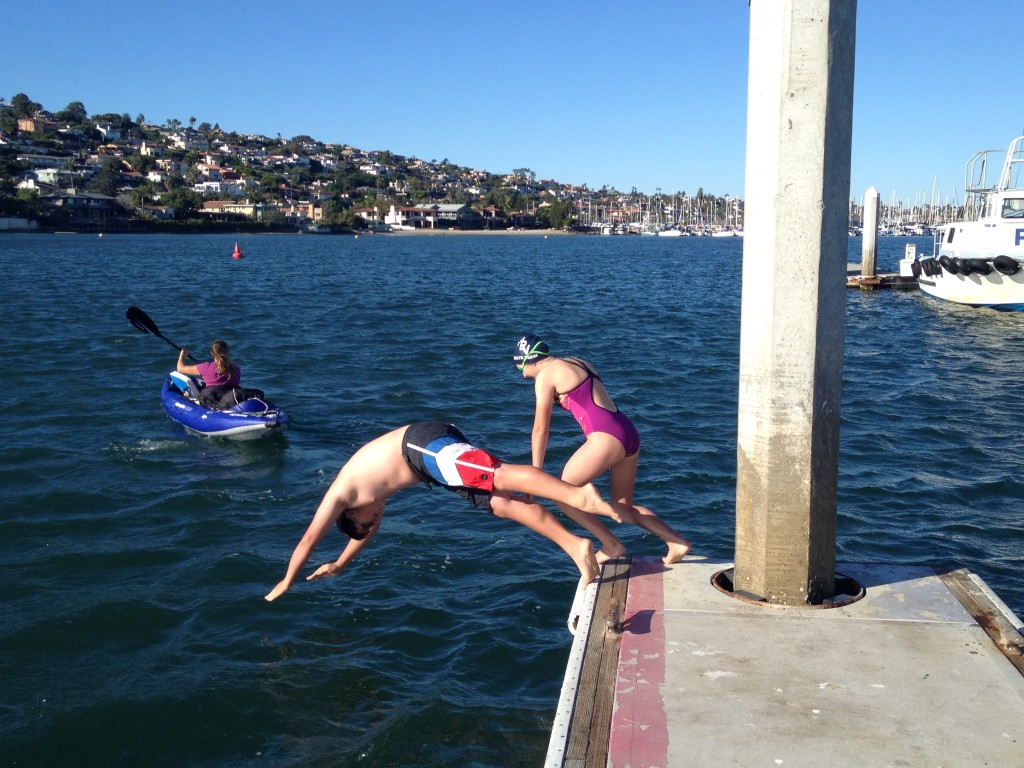
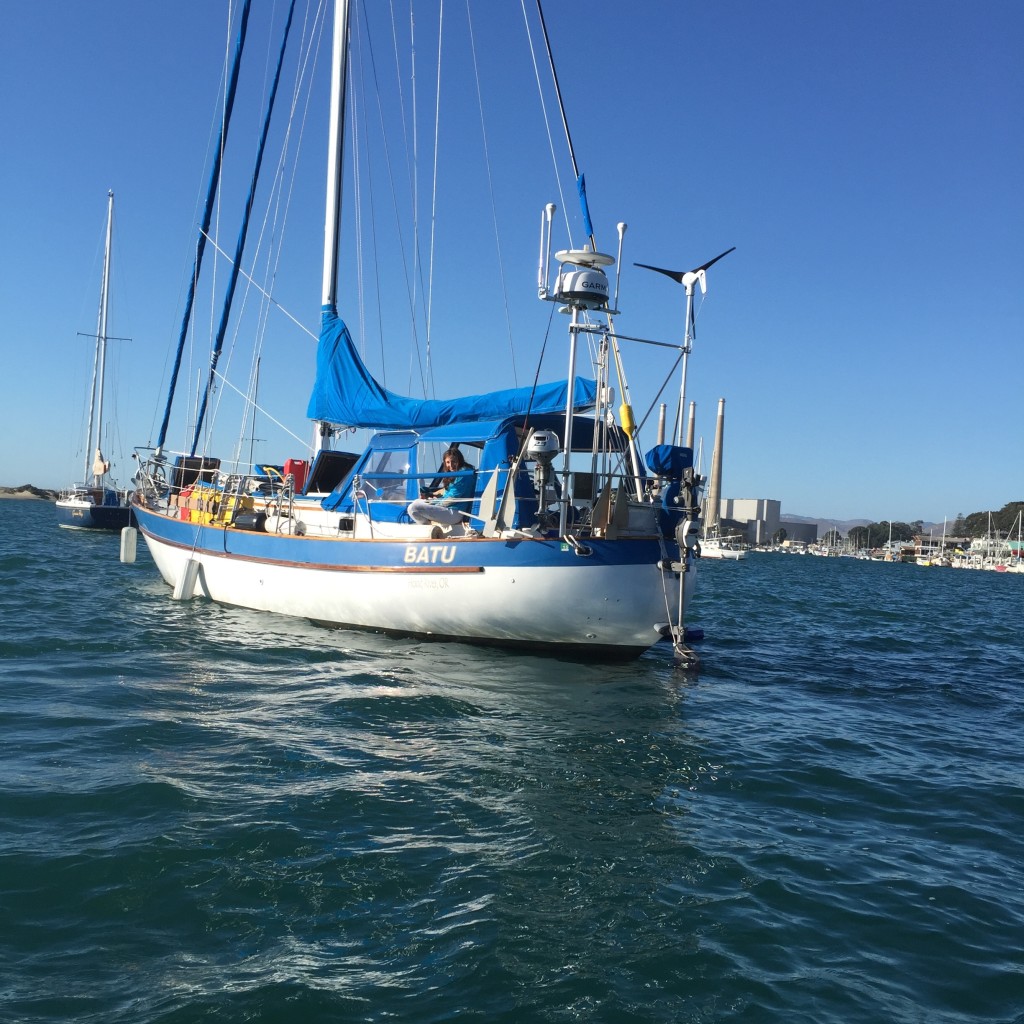
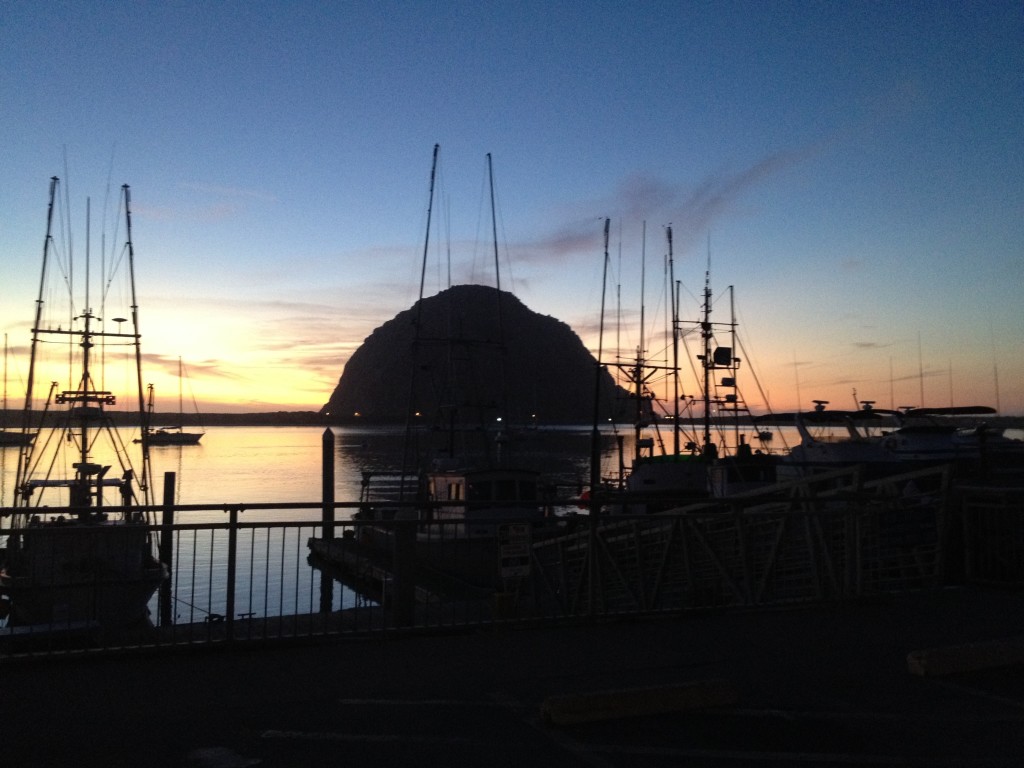
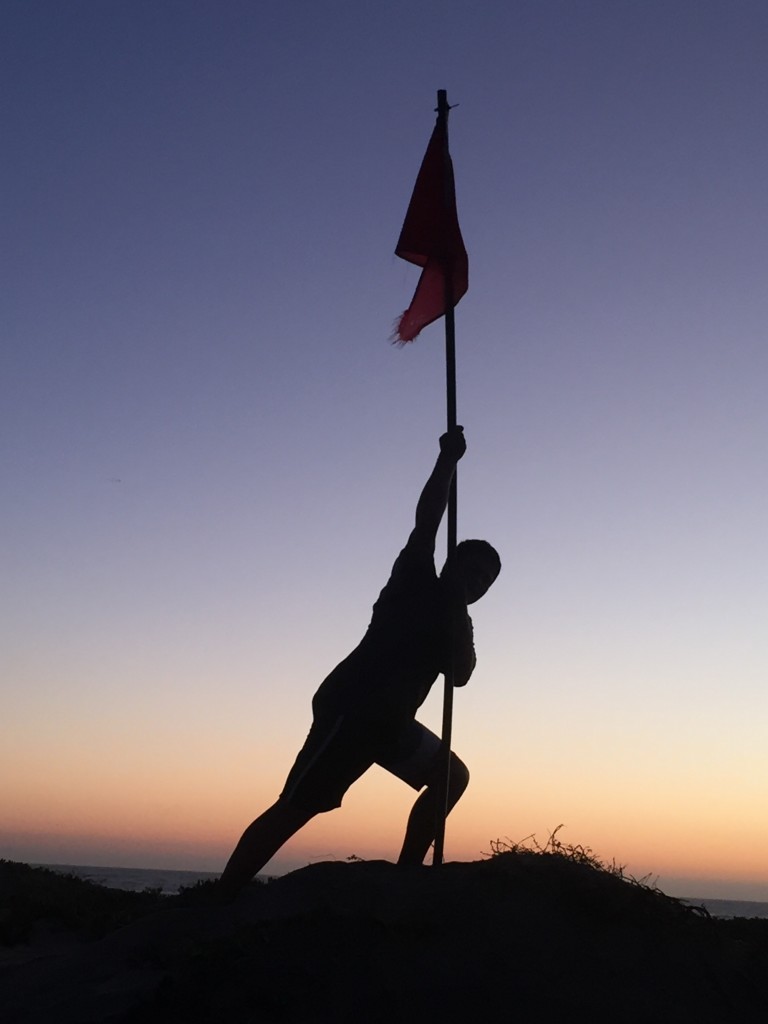
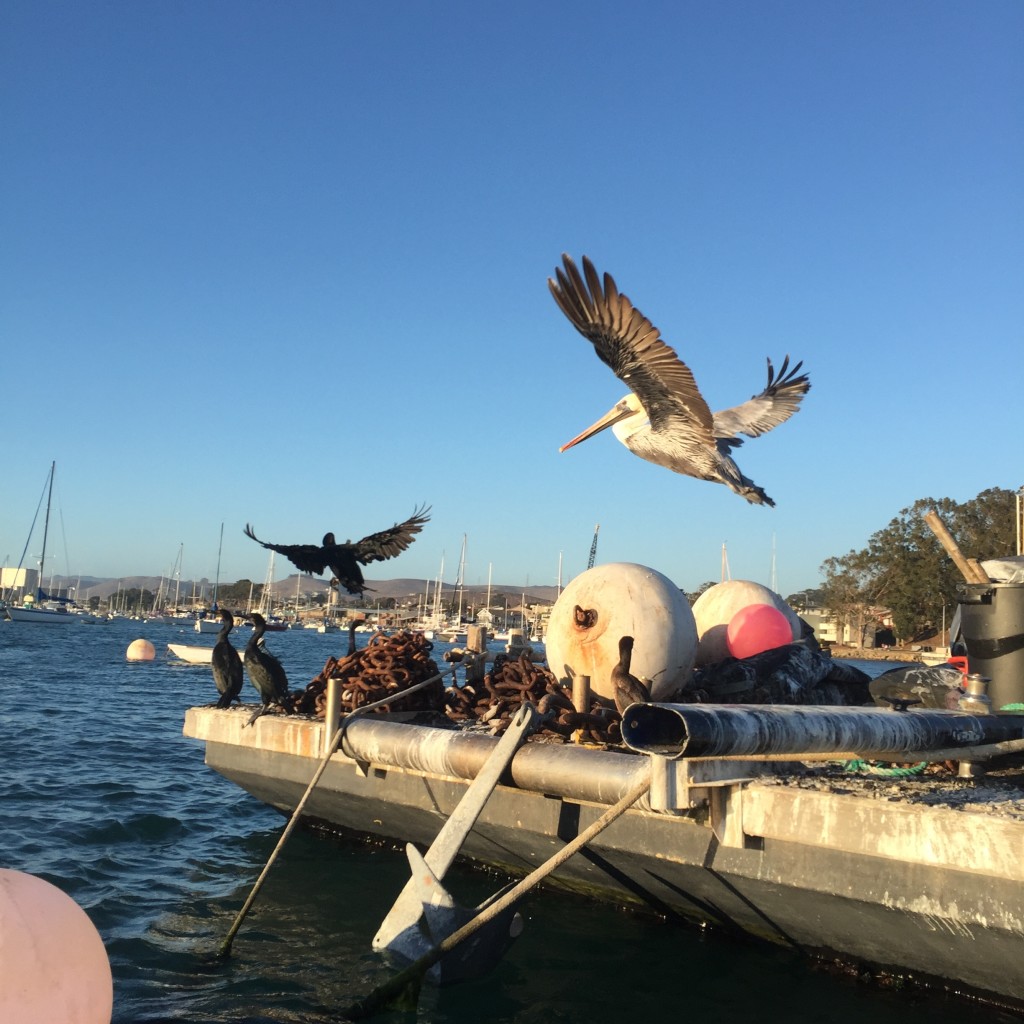
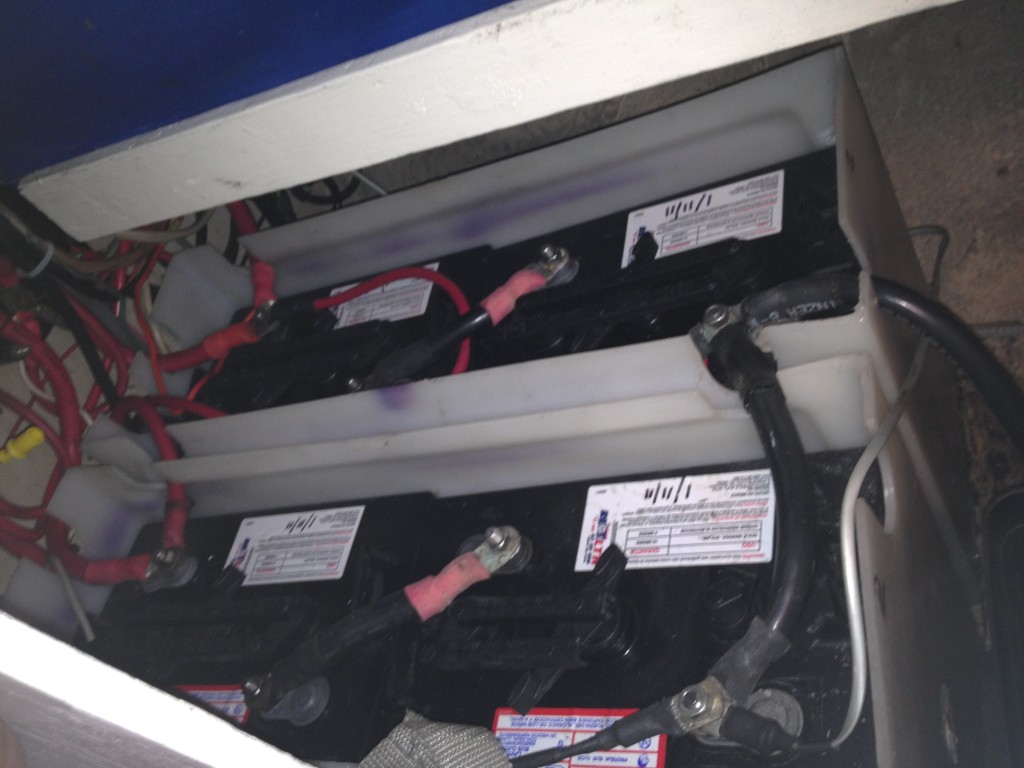
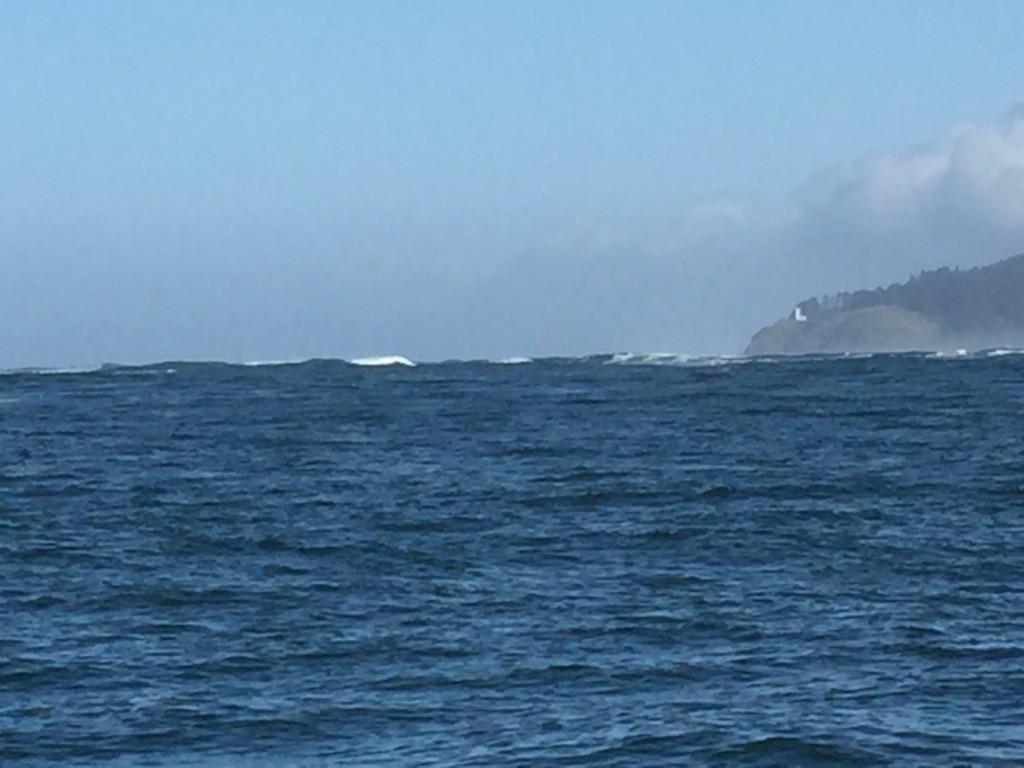
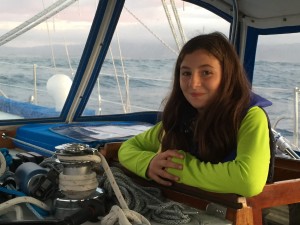
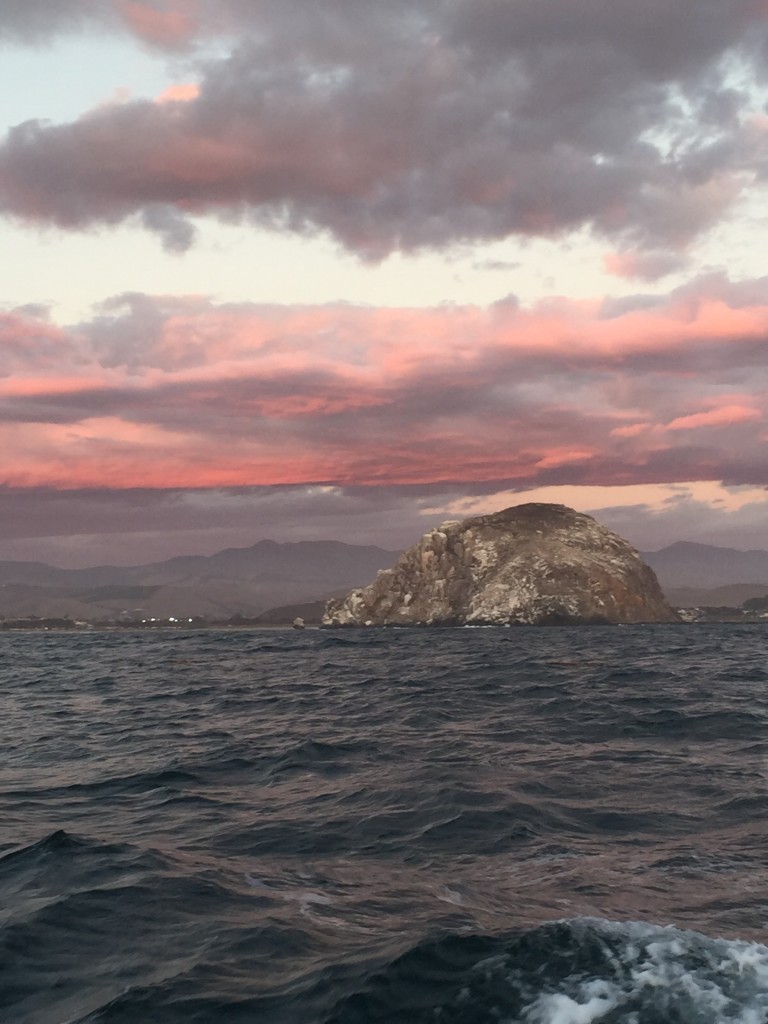
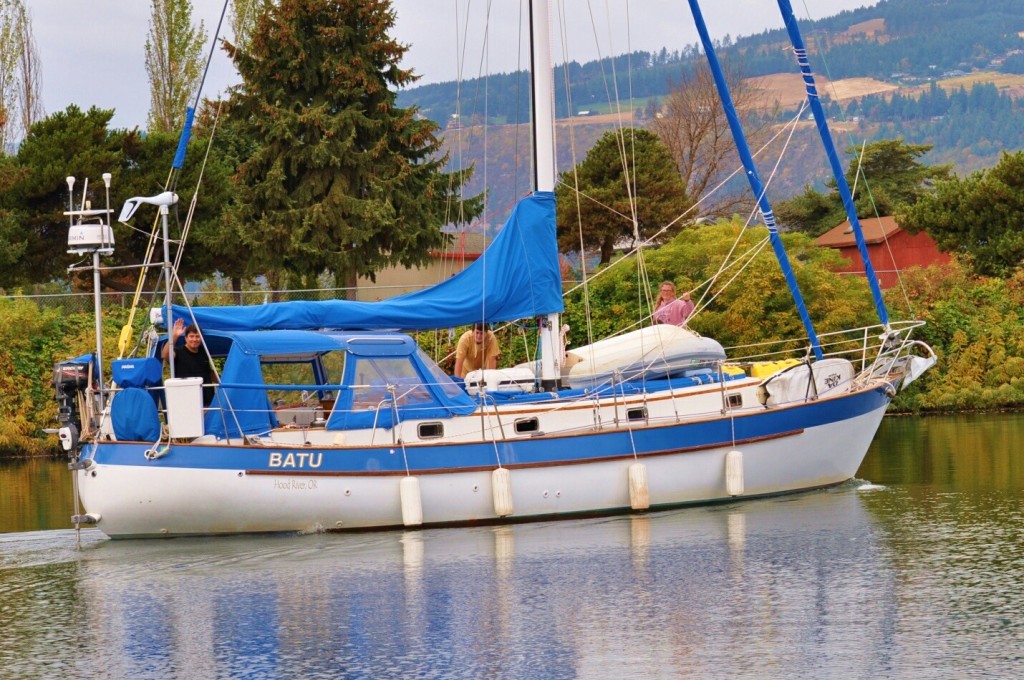
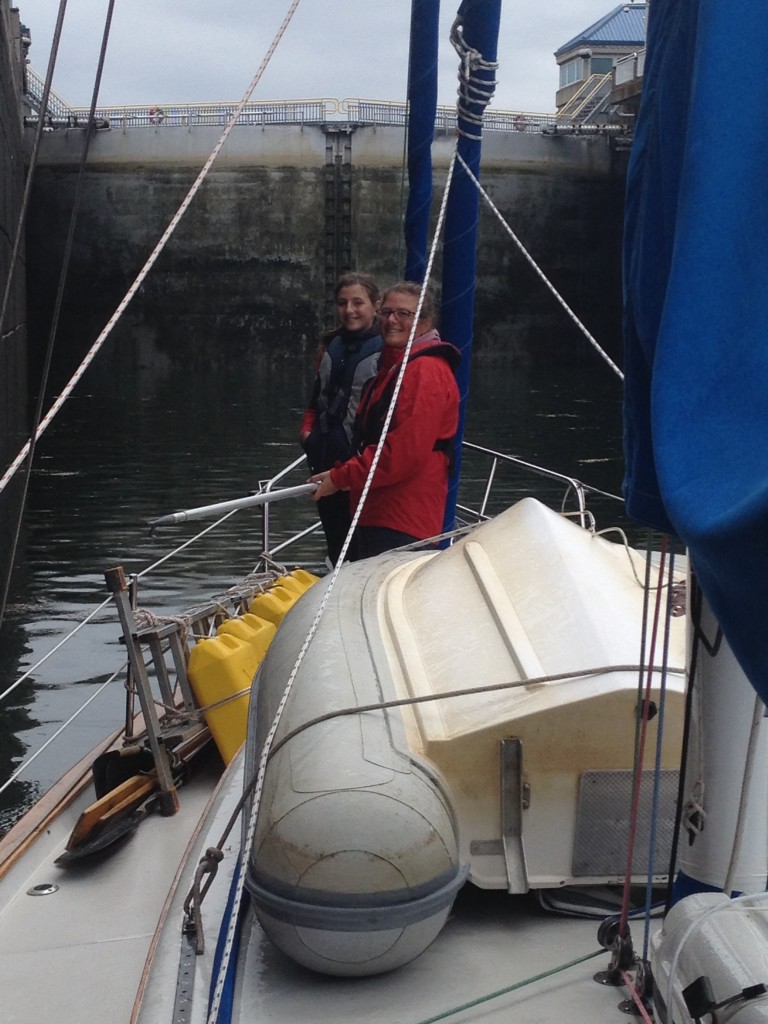
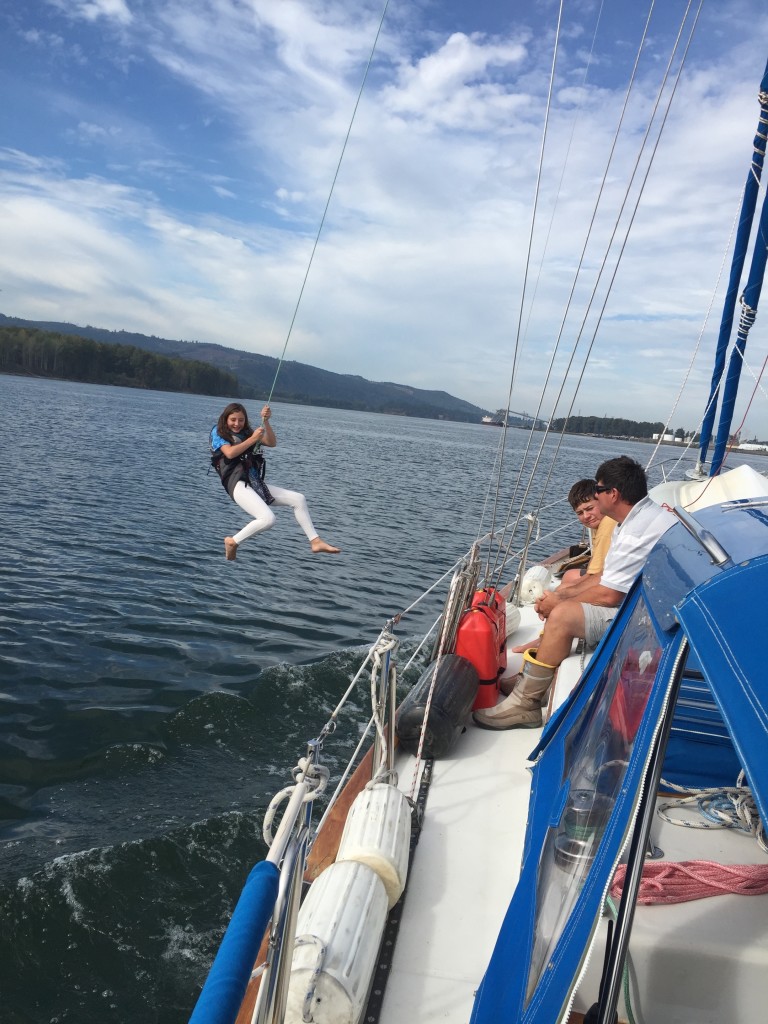
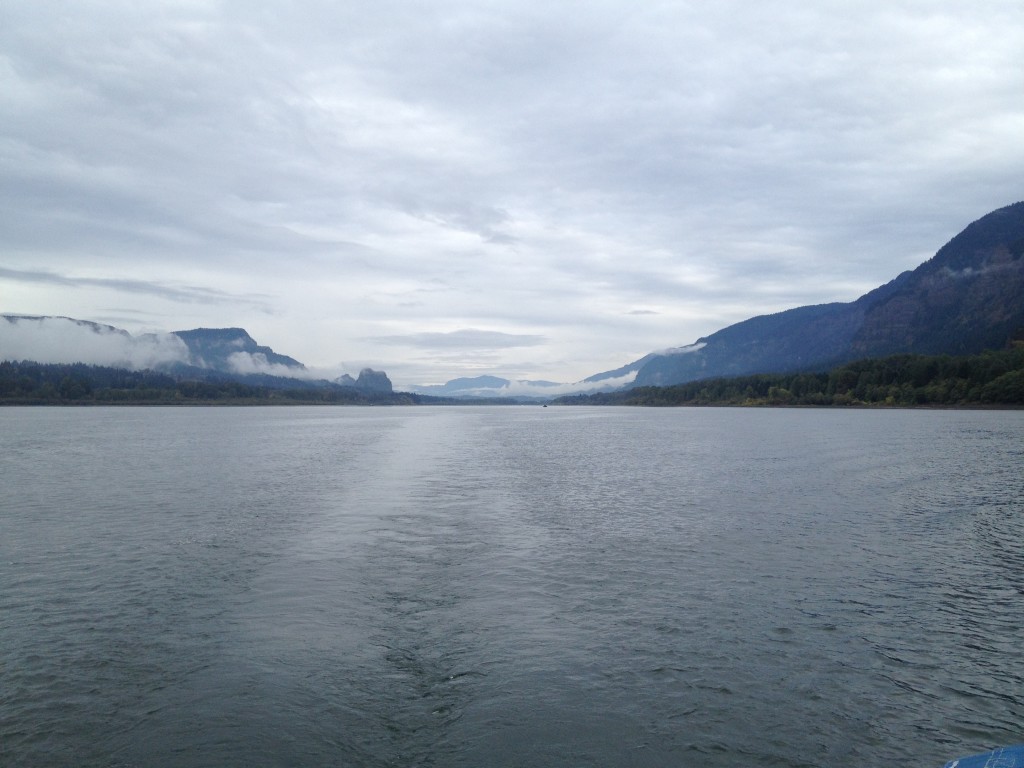
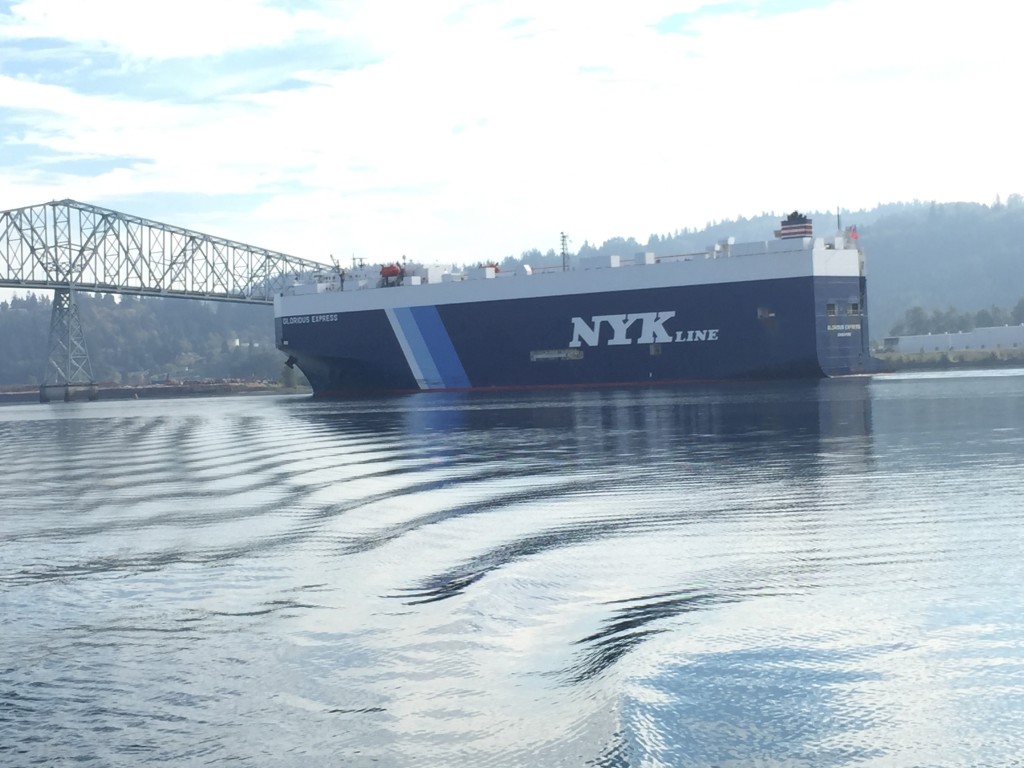
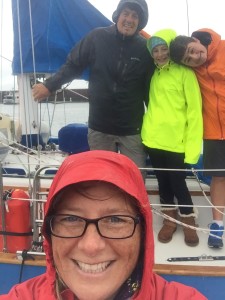
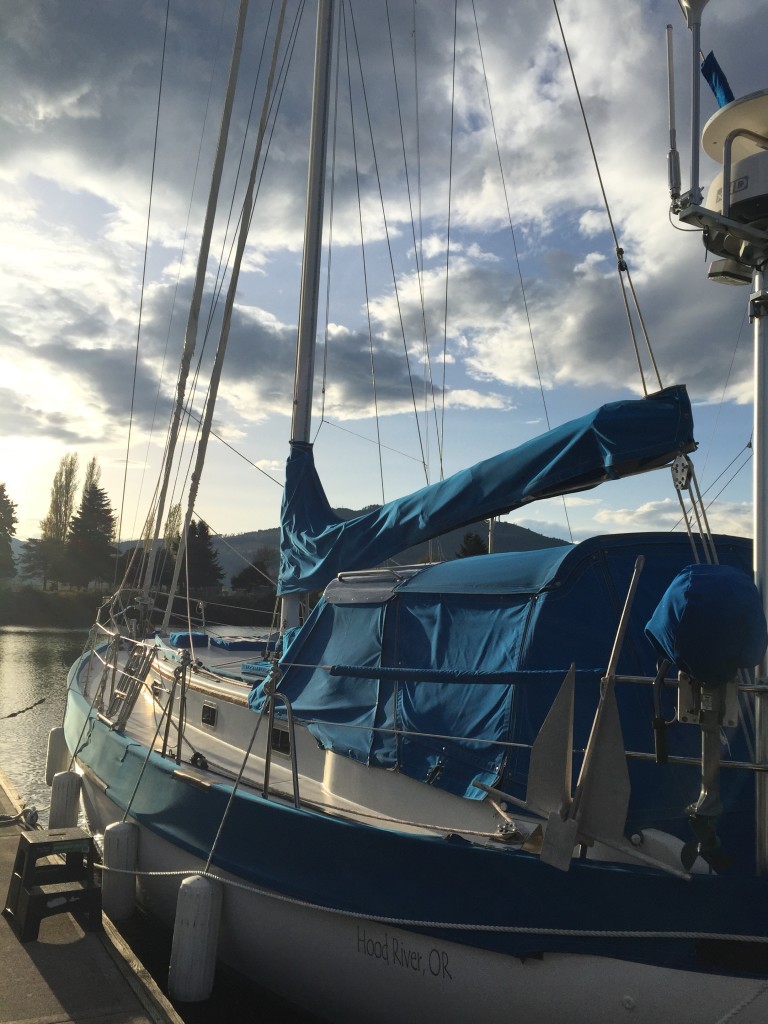
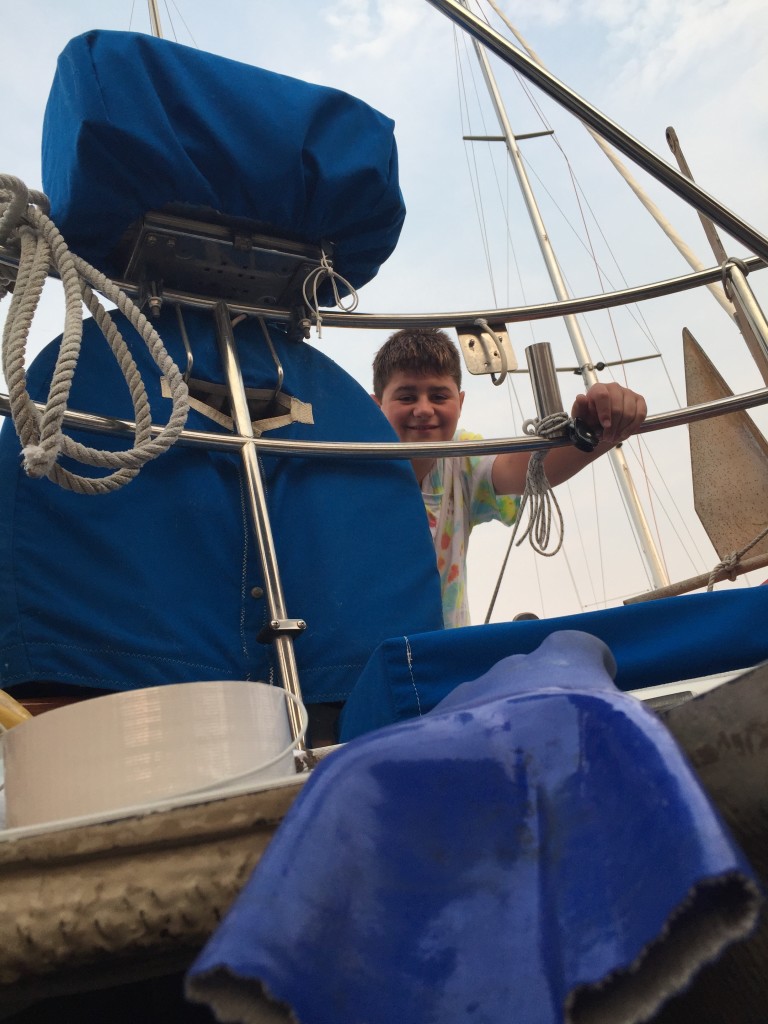

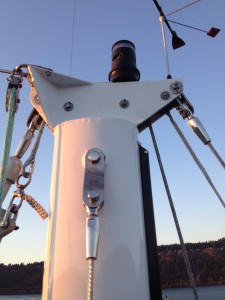
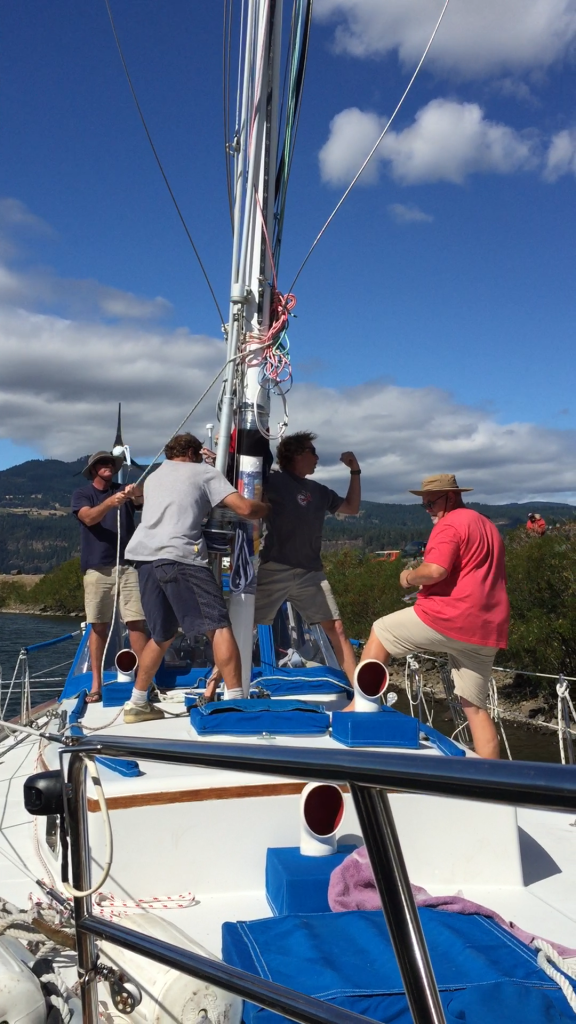
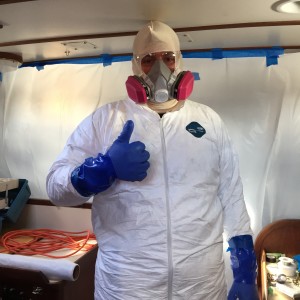 tearing out the interior of a beautiful boat and proceeding to grind fiberglass tabbing with a heavy 4″ angle grinder. Add daily highs around 105 – 110 degrees plus a full suit of Tyvek and let the head-popping itchiness begin. Ultimately, I gave up on the Tyvek suit to avoid certain heat stroke and resolved to feeling like a porcupine with fiberglass quills for the rest of the month. Periodic swims in the cool marina water helped to wash off fiberglass dust and sweat. It took all month to replace the 9 stainless chainplates that anchor the rig and rebuild the tabbing on 2 critical knees that support those chainplates, but I’m pretty sure there will be at least one dark and stormy night where we’ll be very happy to have this work done.
tearing out the interior of a beautiful boat and proceeding to grind fiberglass tabbing with a heavy 4″ angle grinder. Add daily highs around 105 – 110 degrees plus a full suit of Tyvek and let the head-popping itchiness begin. Ultimately, I gave up on the Tyvek suit to avoid certain heat stroke and resolved to feeling like a porcupine with fiberglass quills for the rest of the month. Periodic swims in the cool marina water helped to wash off fiberglass dust and sweat. It took all month to replace the 9 stainless chainplates that anchor the rig and rebuild the tabbing on 2 critical knees that support those chainplates, but I’m pretty sure there will be at least one dark and stormy night where we’ll be very happy to have this work done.